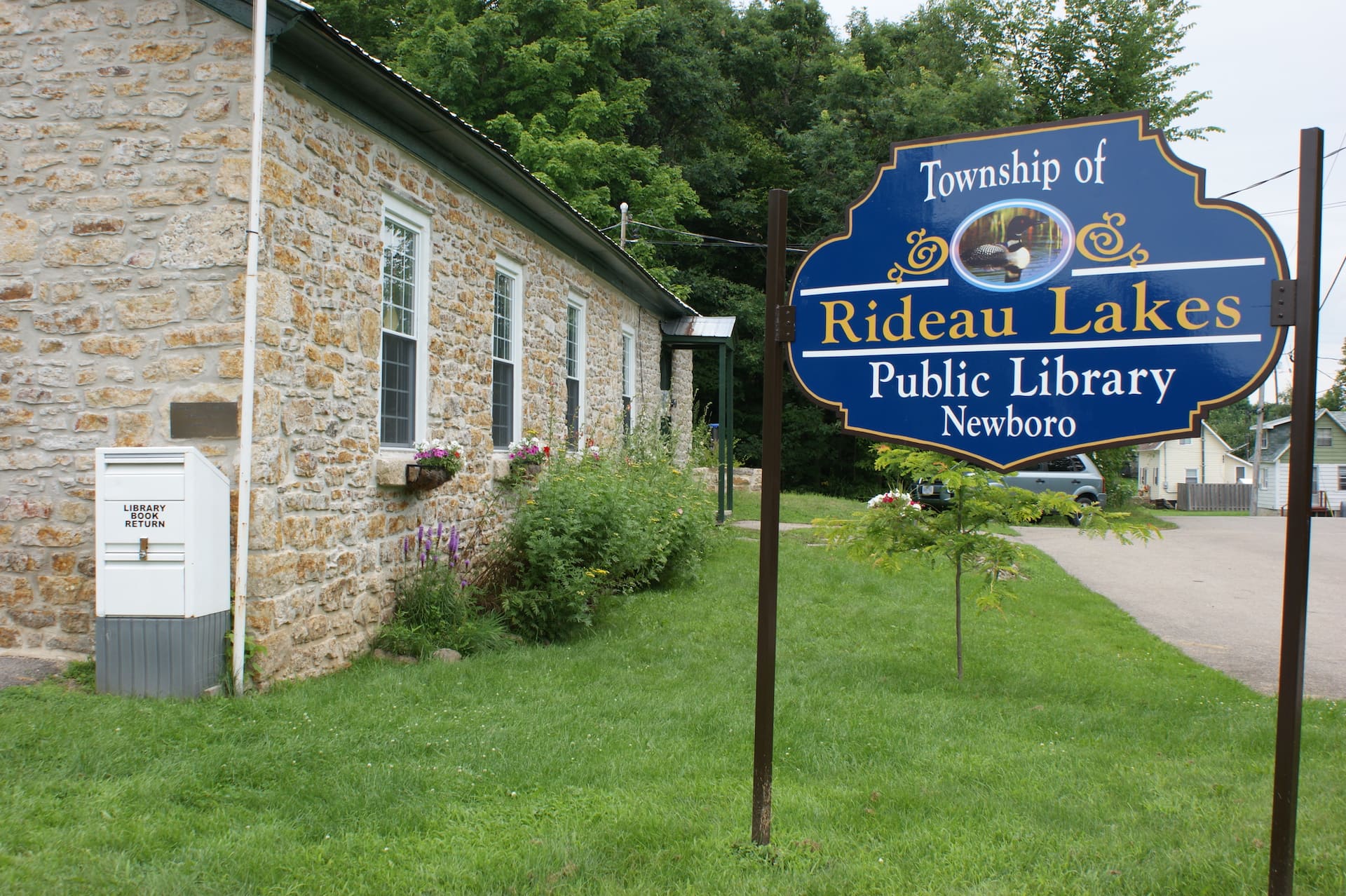Newboro’s ‘Memorial Park’ is a tribute to a group of World War 2 veterans who chose a far-sighted approach regarding the disposal of monies raised during the war years for their wellbeing. Newboro has greatly benefitted from their decision, plus the work of dedicated volunteers who yearly ensured that the veterans’ intentions for the community were maintained and expanded. Together they have enriched the lives of Newboro’s citizens.
The first recorded usage of the land now occupied by Memorial Park was in the 1850s, following a meeting held in the Newboro school house resulting in the formation of the North Crosby Agricultural Society. The resultant annual September fair, on land at the east end of the village, was to be ‘a cattle show, and all stock, implements of husbandry and horticulture, seeds and plants, grains, vegetables, fruits, butter, cheese, articles of manufacture would be exhibited’. Included would be a track for horse races.
Soon after the initial fair, plans were afoot to place a hall on the grounds. In 1868, the North Crosby Council approved an expenditure of $200 to the Agricultural Society for the purpose of building a hall (later named Victoria Hall) at the fairgrounds.
One can imagine the great anticipation for this yearly festive occasion: ‘a gala day in delightful surroundings’. A 1901 newspaper account described the Newboro fair saying:
[I]t boasts the most beautiful of any exhibit grounds in the riding. Thanks to the North Crosby Agricultural Society, the grounds have been recently groomed and improved. The Society has established the fair in a grove of black oak and pine trees. With private subscriptions, enough money had been raised to build a new horse racing track. There were fresh pens for the livestock, sheds for displaying root vegetables and a hall for Ladies Exhibits. As well, the Society had great plans for the fair: there would be foot runs, a carrier pigeon race and games of catching a greased pig, with a purse of $60.00 [a huge sum then] for the winner of a three-minute boxing match.
This exhibition hall was utilized as a display area during fair day, as well as by the Newboro Simpson Masonic Lodge and the Newboro Womens Institute as their meeting place.
However the Newboro Fair ended, likely due to the depopulation of rural areas following World War 1. By 1923, when a major fire destroyed many buildings on Drummond Street (Highway 42), the Masons opted to move the building (probably no longer utilized for fair purposes) to the corner of Carleton and Drummond Streets. Here it became a centre for community events, as it is in 2025.
The ‘fair grounds’ property, continued to be of value to the community, especially with the purchase of additional land (and subsequent naming of the park) after World War 2. During the war the Soldiers Benefit Club had been formed with the intention that the funds raised through the activities of this club would be donated to returning soldiers (as had been done after WW1) for their personal use. By 1945, this club had ’a good balance of funds and had planned on giving each returning man a small token for their service in the second World War’.
However, in 1946, these veterans had other intentions for they preferred this money be expended for community uses. The total was subsequently transferred to a newly formed Newboro Social and Athletic Club. The Newboro Council purchased an additional 6 acres of land from Stanley Dier (former Graham farm), later acquiring the Newboro railway station lot for park purposes.
The first project was the construction of a rink: in 1946, the men of the village commenced with the purchase of lumber, with some public-spirited citizens assisting with the costs. The club sponsored a hockey team which, with Newboro’s reputation as an ardent hockey-supporting community, aided in financing the rink.
In 1948, the decision was made to re-commence the annual Newboro Water Carnival which had been in abeyance during the war. With funds from this first carnival, swings, a maypole and a slide were placed at the Newboro Public School. The Newboro Community Club, the amalgamation of the Newboro Social and Athletic Club, and the Water Carnival organization, worked towards the development of Memorial Park with the placement of fences, lights, bleachers, and playground equipment. Yearly the grounds, leased from Transport Canada, at the Lock were improved for use during the Water Carnival and by those visiting the Newboro lock station.
The Newboro Community Club sponsored hockey and baseball teams for boys and girls, hosted field days to raise funds, and in later years commenced baseball tournaments. Events at the Community Hall were part of the sponsored activities, such as amateur nights and Halloween parties.
Memorial Park exists because of the aspirations of the fall fair agricultural community, Newboro Council, and the generosity and goodwill of both returning veterans and Newboro’s citizens as they laboured together for the betterment of their society and its young people.
Diane Haskins (with appreciation to the meticulous record keeping of Olive Taylor Adams)




